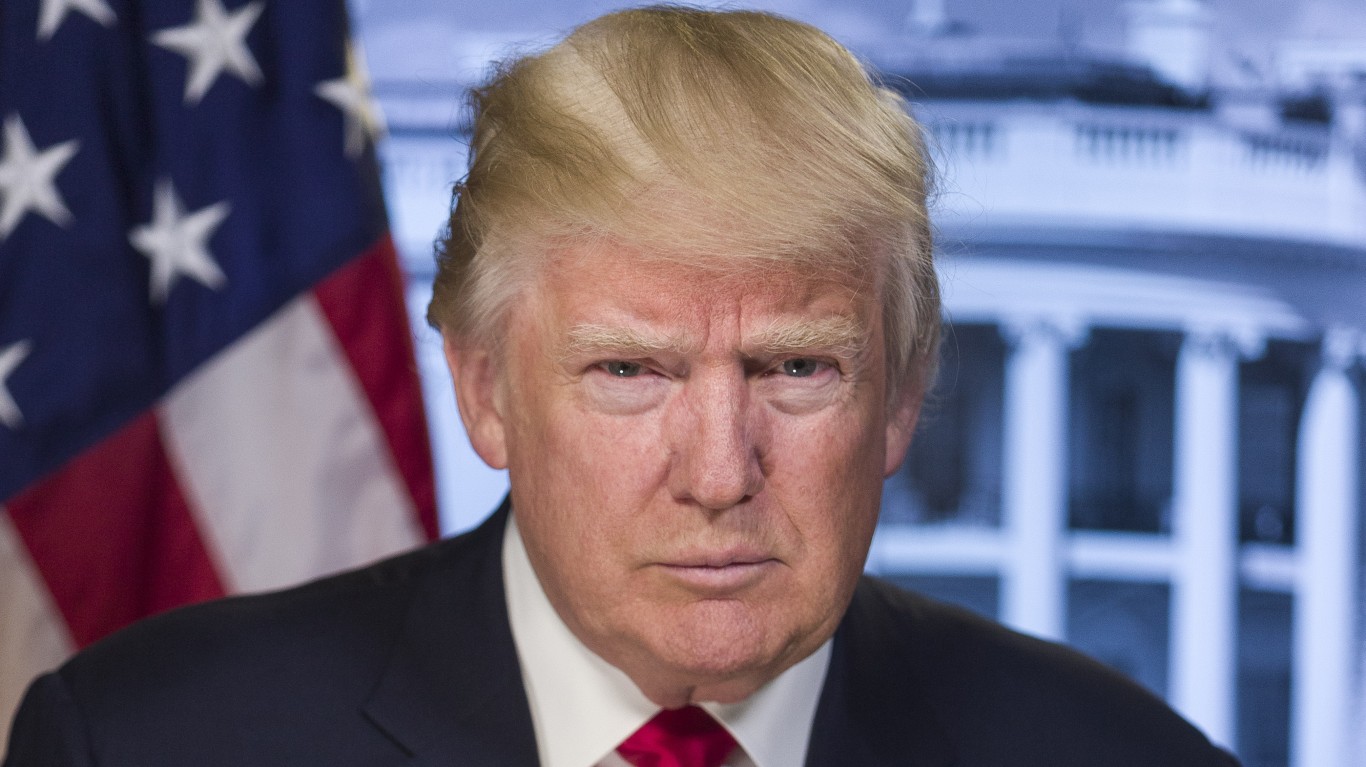
This past week gave investors, economists and business owners a lot of different data to consider. With a presidential election that is just about (finally, really!) over and with economic data coming out so mixed, there are a lot of things that can sway the Federal Reserve’s appetite to raise interest rates in December.
What 24/7 Wall St. wanted to view is what could drive interest rates up faster than expected in 2017. This is of course something that remains to be seen. After all, the rate hike hasn’t even taken place, and the election result hasn’t even been seen yet.
Most economic data seems mixed, but we did see a narrower trade deficit, and the first look at third-quarter gross domestic product (GDP) was stronger than expected. What if a Merrill Lynch view is right that GDP might have actually grown at 3.1% in the third quarter?
Another issue is that wages are rising. We keep seeing mixed reports about actual hiring and payroll strength has been muted. Still, the trend that keeps going is higher wages. If this continues, then the Federal Reserve could have even more rate hike fears in 2017.
Another promise that has been made by Trump and Clinton alike is higher infrastructure spending. This varies from a range of $250 billion to over $1 trillion, but the reality is that neither candidate has come close on what would really need to be spent to make America’s infrastructure top-notch again.
Credit Suisse issued multiple factors that could further generate upside risks for bond yields in 2017, above and beyond their forecast for higher interest rates already expected:
1) There is a general move of policy makers away from negative interest rate policies towards fiscal easing;
2) Growth proxies (cyclicals to defensives, global IP, commodity prices) imply yields should continue to rise;
3) China is no longer exporting deflation (for the first time in 2½ years) and US wage growth is in a modest uptrend, leaving long-term implied inflation rates too low;
4) The term premium and implied volatility are close to historic lows;
5) Populism tends to be bad for bonds;
6) Logistical and political challenges for quantitative easing in both Japan and the euro area are likely to arise;
7) Outside of Japan, government debt-to-GDP and unemployment in the G4 would stabilize on higher real yields.
There is no magic bullet when it comes to predicting interest rates. We have seen a decrease in the global tally of sovereign debt trading at negative yields. That is good, but it can of course reverse.
One interesting view is that Europe has managed to keep GDP above zero despite all the woes. What if all that quantitative easing finally translates into something real on the unlocking capital for 2017?
Also, we saw that an overwhelming majority of corporate cash is locked up overseas. Moody’s gave a fresh projection for non-financial companies to have $1.77 trillion in cash at the end of 2016 — and imagine how much more growth could be unlocked if a grand bargain finally could be reached that would allow for the the bulk of that overseas cash to be repatriated to the United States.
Are You Still Paying With a Debit Card?
The average American spends $17,274 on debit cards a year, and it’s a HUGE mistake. First, debit cards don’t have the same fraud protections as credit cards. Once your money is gone, it’s gone. But more importantly you can actually get something back from this spending every time you swipe.
Issuers are handing out wild bonuses right now. With some you can earn up to 5% back on every purchase. That’s like getting a 5% discount on everything you buy!
Our top pick is kind of hard to imagine. Not only does it pay up to 5% back, it also includes a $200 cash back reward in the first six months, a 0% intro APR, and…. $0 annual fee. It’s quite literally free money for any one that uses a card regularly. Click here to learn more!
Flywheel Publishing has partnered with CardRatings to provide coverage of credit card products. Flywheel Publishing and CardRatings may receive a commission from card issuers.
Thank you for reading! Have some feedback for us?
Contact the 24/7 Wall St. editorial team.


